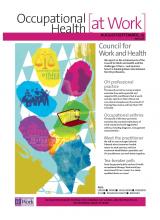August/September 2015 (vol. 12/2)
ContentsFeaturesNewsLegal
NewsResearch DigestResearch PlusCPD
Research Plus
Fighting fit
Fit fire service workers are less likely to sustain a work-related injury than colleagues with poor fitness, this five-year retrospective cohort study of 799 US fire service personnel finds1. OH data, including workers’ annual fitness assessments, were collected from 2005 to 2009. On-the-job injuries (as described in a previous paper by the same authors2) were recorded if they were either reportable under US legislation or if they might lead to a health insurance claim. Two-thirds of injuries were strains or sprains2. Overall fitness depended on scores for cardiovascular fitness, muscular strength, muscular endurance, flexibility and body composition. Each was divided into three fitness levels, the lowest of which was defined as being ‘where the ability to safely perform all emergency job tasks could be questioned by an occupational physician’. One in five (21%) of the overall fitness test scores were in the lowest fitness group and 33% in the highest. There were no significant differences between the highest and middle fitness groups in their risks of having any kind of injury or in having a sprain or strain during the study period. However, those in the lowest fitness group had a 1.82-times greater risk of sustaining an injury (CI 1.06–3.11) compared to those in the highest category. Their risk of having a sprain or strain was 2.9-times higher (CI 1.48–5.66).
-
Fire fit: assessing comprehensive fitness and injury risk in the fire service. International Archives of Occupational and Environmental Health 2015; online first: DOI 10.1007/s00420-015-1068-4
-
The association of aerobic fitness with injuries in the fire service. American Journal of Epidemiology 2014: 179(2): 149–155. doi: 10.1093/aje/kwt213
Occupational Health at Work August/September 2015 (vol. 12/2) pp40



